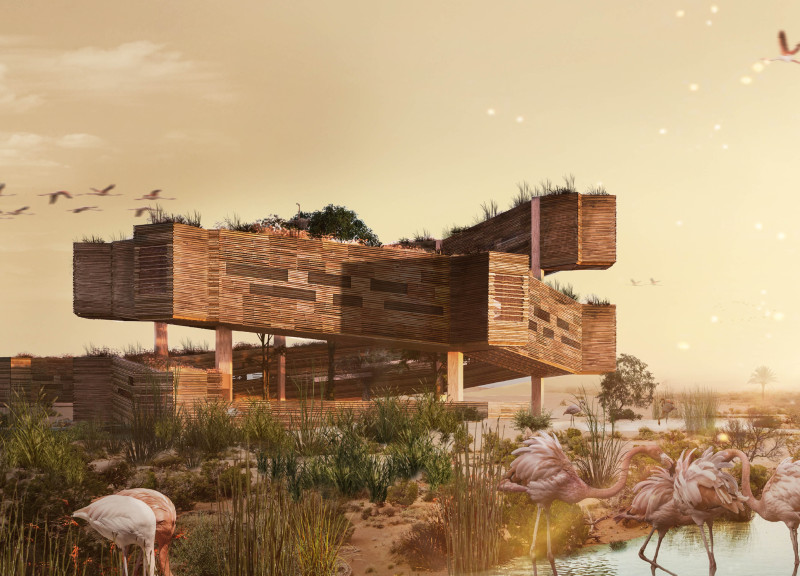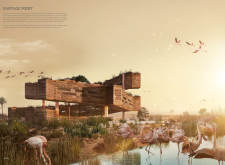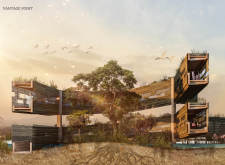5 key facts about this project
Vantage Point is a Mass Timber Bird Watching Pavilion located in Al Wathba. The structure rises from the water level, creating a series of viewing platforms designed to enhance the experience of observing wildlife. It focuses on ecological sustainability and serves as a habitat for various bird species while providing an engaging space for visitors to connect with nature.
Design Concept
The design features layered viewing points that allow visitors to take in a range of perspectives over the surrounding environment. Each platform is carefully positioned to facilitate close observation of local wildlife, promoting an interactive experience without causing disruption. A central arboretum enhances the ecological role of the pavilion, providing nesting opportunities for both resident and migratory birds and reinforcing the commitment to biodiversity.
Materiality
Materials used in Vantage Point emphasize sustainability and structural durability. Glulam beams and cross-laminated timber (CLT) are essential to the pavilion’s framework, combining strength with environmental benefits. A green roof made of native plants improves insulation and supports local wildlife, while a polyethylene roofing membrane serves as a protective barrier against root penetration. The inclusion of a vapor barrier enhances the longevity of the structure, safeguarding it from varying weather conditions.
Functional Elements
The pavilion is designed with user comfort in mind, incorporating functional features such as optional toilet facilities and a water treatment plant. These amenities ensure that visitors can enjoy their time in the space without impacting the local environment. Additionally, the use of reed mesh skin allows for natural ventilation while contributing to the overall aesthetic of the building, harmonizing with the landscape.
The walkways lead visitors through the site, offering a chance to engage with nature at various heights. This design encourages exploration and discovery, enhancing the experience of bird watching and interaction with the surrounding environment.






















































